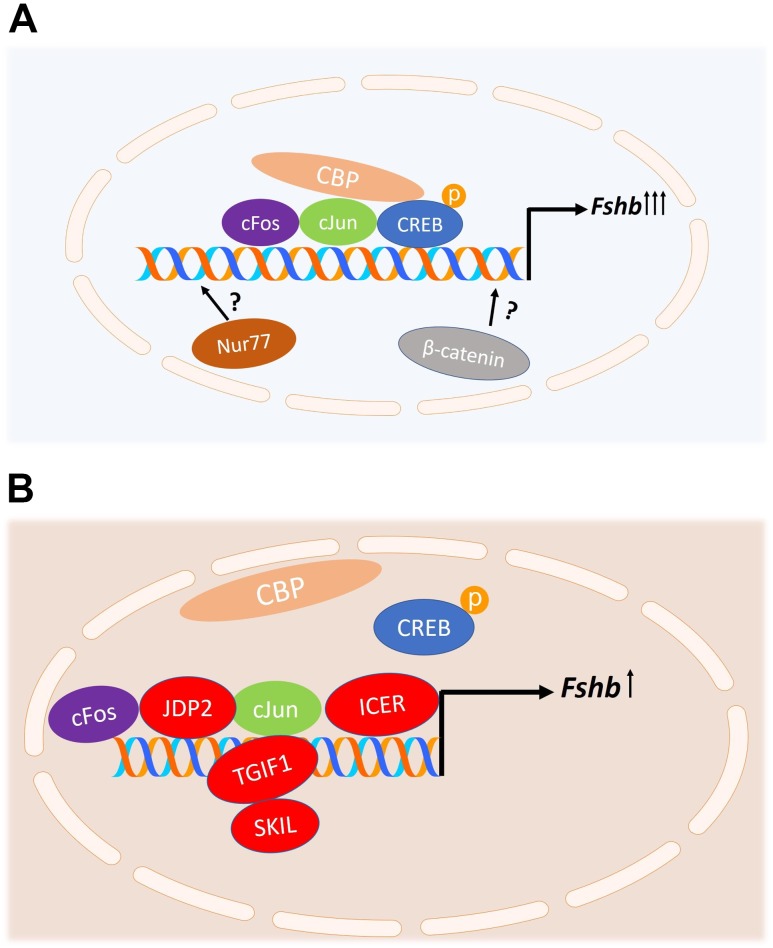Figure 2.
Proposed model of regulation of Fshb transcription by GnRH. (A) Stimulation of Fshb transcription by GnRH. The phosphorylated CREB protein binds to the homologous CRE-AP1 site of the Fshb gene promoter and recruits the histone acetyltransferase CREB-binding protein (CBP), stimulating Fshb transcription. GnRH-induced activation of MAPKs and Ca2+-dependent pathways stimulates the expression of cFos, FosB, cJun, and JunB, and a combination of these factors binds to the AP1 site in the Fshb promoter to stimulate Fshb transcription. Other mechanisms for GnRH stimulation of Fshb promoter involving the nuclear orphan receptor Nur77 and β-catenin have been proposed but are yet incompletely understood. (B) Repression of Fshb transcription. At high GnRH pulse frequencies, repressors are induced and compete with CREB and/or AP1 proteins for the same binding sites on the Fshb gene promoter. Inducible cAMP early repressor (ICER) attenuates GnRH-induced Fshb expression by antagonizing the binding of CREB to the CRE site and thus preventing the recruitment of CBP. SKIL and TGIF1 bind to the Fshb promoter and inhibit GnRH-mediated Fshb expression by attenuating the actions of cFos and cJun. c-JUN dimerization protein 2 (JDP2) is a novel repressor of GnRH-induced Fshb expression. JDP2 binds to the AP1 site of the Fshb promoter, complexing with cJun and hence preventing cFos-cJun dimerization.

